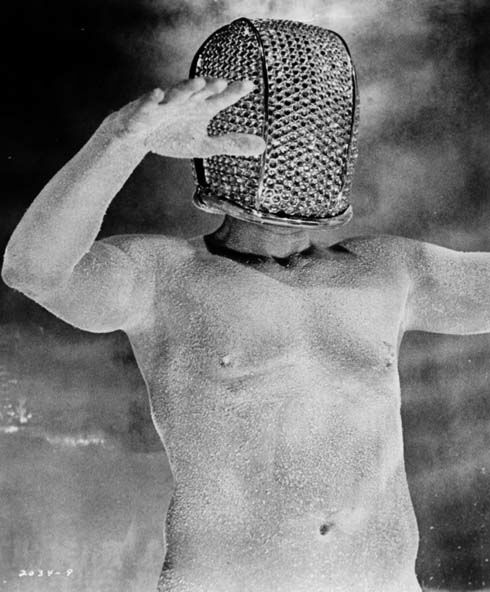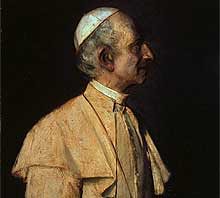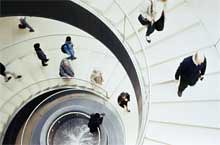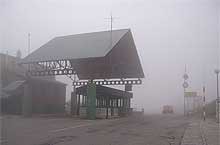Spirit Daily has reported on some drastic measures being taken to
The Bishop of San Jose, California, has issued a statement implementing temporary changes in Eucharistic celebration due to the flu epidemic. Because the strain this year is especially transmissible, Bishop Patrick J. McGrath is suspending the offering of Communion under both Species and has ordered Communion distributed only on the hands. He has also asked that the Sign of Peace be adapted so that it "does not involve shaking hands or touching." He has requested that congregants refrain from holding hands during the Lord's Prayer, and has directed all who administer the sacrament to wash their hands with an alcohol-based anti-bacterial solution. "While I realize that these measures are drastic, I have been assured by public health officials that they are necessary so that we can do our part to foster health," said the bishop, who took the action after he was approached by members of the medical community.But a lot of the Diocesan press release from which this was taken got left on the cutting-room floor before the story reached Spirit Daily. Through various clandestine means, the Dossier has obtained the full release,[1] which picks up where the Daily's story ends. Photos originally intended for release are also included:
. . . The restrictions, however, are only temporary. Bishop McGrath has announced that they will soon be replaced by the Diocese's new Project Wildfire. "We're very excited about the project," said Fr. Charles Dutton, Director of the Diocese's Ministry of Public Outreach, "it's going to be a milestone in liturgical sanitation."
According to Wildfire plans released by the Diocese, an extensive rebuilding project will leave each parish Church sitting atop a state-of-the-art, microbiologically-clean Liturgical Environment consisting of a series of ring-shaped levels connected by elevators and an emergency network of ladders in the central shaft called "The Central Core":

Schematic of Wildfire Liturgical Environment
Persons who wish to attend Mass will progress through five successive types of decontamination, one on each Level. Beginning at Level 1, parishioners will remove their clothes and undergo strip-searching for contaminated personal objects, as well as a complete physical examination, by trained members of the Knights of Columbus.
After receiving the first of a series of disposable paper garments, they will descend to Level 2, where antibiotics and antibacterial purgatives will be administered. After a variable waiting time, parishioners will descend to Level 4 where they will be scanned to ensure that decontamination procedures have left them free of influenza.

Magnified image of influenza virus
"Each level renders the parishioner progressively free of influenza risk, explained Fr. Dutton. "The paper suits issued on one level are discarded and burned on the next, so there's no danger of the flu virus reaching the next level."
Finally, each parishioner will have the outer layer of his or her skin removed by a process Fr. Dutton called "flash burning."

Test parishioner undergoes "flash burning."
"It's quite painless," Fr. Dutton explained. "Its only purpose is to remove the outer layer of skin, which is the last refuge of a possible influenza virus, including any viruses contacted from other parishioners or staff in the first four levels."

Magnified image of influenza virus. Icky, isn't it?
After the flash-burn process, parishioners will be issued Clean Suits.

Clean Suits as approved by Diocesan Liturgy Affairs Committee
The suits will be issued in the season's liturgical color. "It's important for people to actively participate in the liturgy," said Fr. Dutton, "wearing clean suits in the season's color will foster a spirit of communal sharing in liturgical procedures."

Clean-suited parishioners bond during liturgical procedure
But the Diocese is taking no chances when it comes to contamination. Even though experts have pronounced the Wildfire process safe, the possibility that dangerous influenza organisms might penetrate to even the lowest level still worries planners.

Magnified image of influenza virus. Frightened yet?
"We've agonized about it," Fr. Dutton explained, "and concluded there's no other way to ensure the safety of our parishioners."
That's why each Church will be equipped with a nuclear self-destruct device buried at the bottom of "The Central Core."

Construction worker, Central Core, St. Francis' Church in Beaverton
If interior sensors detect the release of influenza, computers will begin an automatic countdown to detonation. A safeguard has been provided in the event of a false alarm: One priest in each parish will be equipped with a key that can be inserted into any one of a series of stations scattered around each level and which, if turned before a certain point in the detonation countown, will end the auto-destruct sequence.
We've already tested it, and it works fine," said Fr. Dutton. "The defense system is perfect," Fr. Dutton said, "it'll even bury our mistakes!"

Fr. Mark Hall of St. Joan's in Kenyon races to insert his key during a test.
Deacon Jeremy Stone follows.
Obviously such a sweeping renovation of liturgical practices will require changes in how things are done, Fr. Dutton noted. "For example, since Mass will be offered deep underground on Level 5, we're going to have to come up with alternatives to traditional decorations like stained glass windows."

"Meditation Panel" at St. John's Level 5, Williamsport
And sacristies, he said, will take on a decidedly-new appearance.

Sr. Ruth Leavitt examines the HEPA compliant sacristy at St. Bernard's, Cedarton
The use of clean suits will also change the way the liturgy appears to today's Catholics. Expert liturgists are still ironing out the details," said Fr. Dutton, "but we have a pretty good idea what the final result will be."

Commission of Liturgical Experts at a recent meeting.
With help from some of his staff, Fr. Dutton gave a presentation of what a typical baptism will look like under the new Wildfire regulations.

Fr. Mark Hall and Sr. Karen Anson rehearse new baptismal procedures.
But some parishioners are distressed at the thought of changes in the way the Church does things.
"I'm not sure about it," said, Jeanne Williamson, a thirty-year parishioner at St. Aloysius in Teasdale. "What's wrong with former practices? Abolishing communion on the tongue seems to have done the job. Do we really need to wear Clean Suits?"
"I'll put one of them things on over my dead body," said Robert "Gramps" Jackson of St. Mark's in Logan. "Nobody's gonna burn off my skin, painless or otherwise. Besides, the alcohol-based anti-bacterial solution's a heckuva lot more reverant than standing around with a colander on your head."
But Diocesan officials remain undeterred. "This is the safest, best way we've been able to come up with that will ensure a safe Liturgical Environment," Fr. Dutton said. "Sometimes the Church must respond to new challenges, and I'm confident that we will do that in a communal, pastorally-sensitive manner."
**************************************************
[1] Of course not, silly.











No comments:
Post a Comment